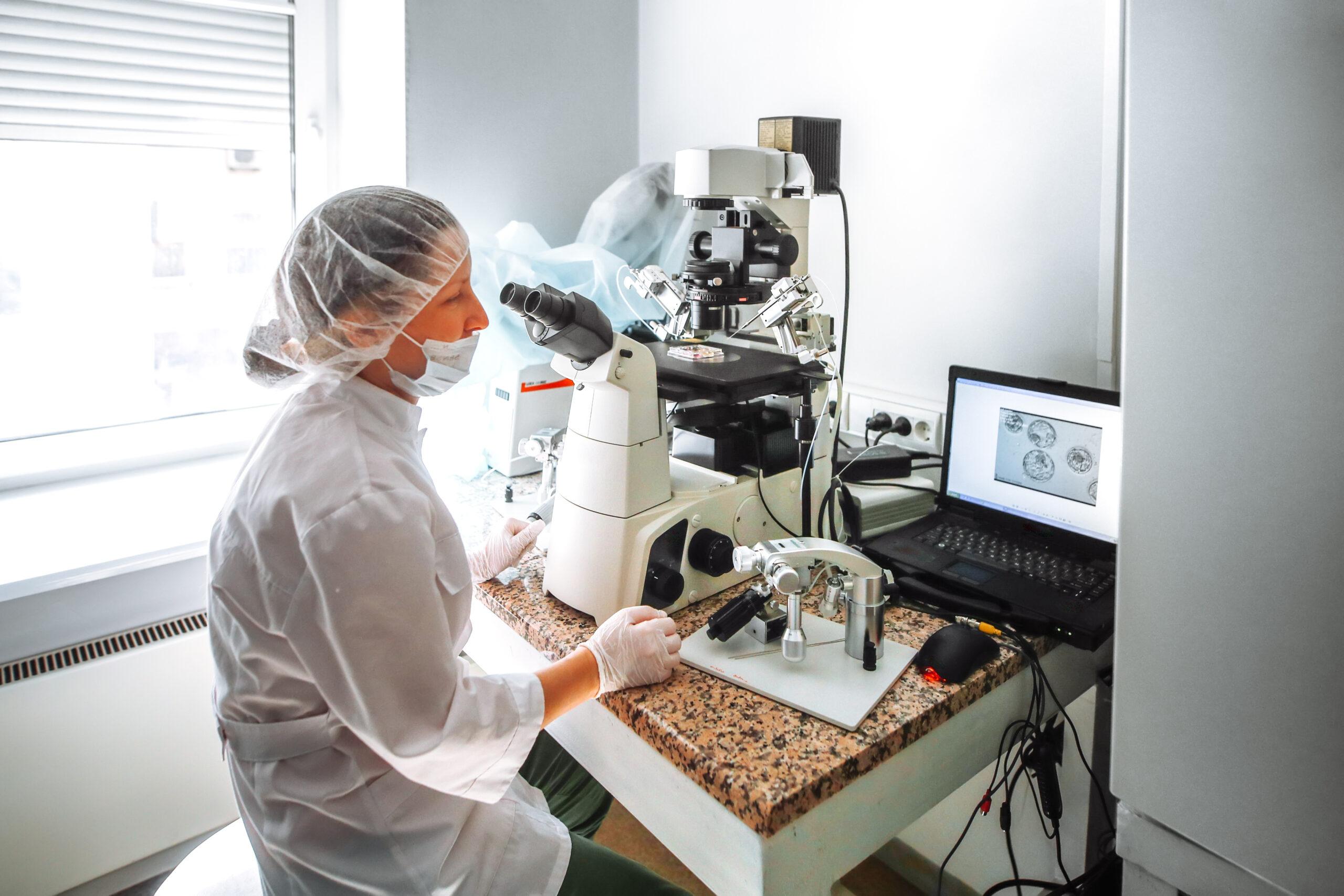Hosts
About the episode
Couples are having kids much later in their lives. As young people spend more of their 20s and 30s getting established in their careers, marriage is delayed, and home buying is delayed, the unstoppable force of delay runs up against the immovable object of human anatomy. It is harder for a 40-year-old to get pregnant than for a 20-year-old to do so.
The best solution we have for the fertility dilemma of the modern age is in vitro fertilization. IVF is a decades-long practice based on science, so you might think that the procedure is highly predictable, something close to an act of precision engineering. But people who have gone through the process know it can be messy, painful, frustrating, and expensive.
So, what would a real scientific revolution in fertility look like? How close are we to a game-changing invention in this space?
Today’s guest is Ruxandra Teslo, a scientist and writer. We talk about the fertility dilemma that exists, the fertility technology that doesn’t exist, and how a revolution in egg science could produce a second baby boom.
If you have questions, observations, or ideas for future episodes, email us at PlainEnglish@Spotify.com.
Summary
In the following excerpt, Derek talks to Ruxandra Teslo about the scientific and social realities of fertility.
Derek Thompson: We’re talking today about fertility, the science of fertility, and even the future of fertility technology. And I know some folks find any level of attention paid to this topic a little bit creepy. Like, why should any stranger care about the number of children you have, the number of children I have? Why is this subject important to you?
Ruxandra Teslo: So, I think, on a very personal level, I suffer from a condition called polycystic ovary syndrome, and I’m a biologist. And I think these two things combined led me down a path of looking a lot at fertility science and realizing that I had been misled by doctors and by—I don’t want to sound conspiratorial—but society in general and common medical knowledge in terms of what my condition meant. And also, even with all of the biological training, what I could find and how badly underfunded and under-researched the topic of fertility was. And then, it just turned into a broader interest, I guess, because I am a woman who wants to have a career; I want to have children as well.
And there are all these conflicts that as I’m approaching my 30s—I’m 28 now—are becoming more apparent to me. And I’m also seeing women older than me grappling with these kinds of things.
Thompson: You touched on something that I think is absolutely critical here, which is this tension between modernity and biology. In rich countries around the world, birth rates have fallen to historically low levels. And a part of that is that many women, especially educated women, have been delaying fertility if they want to work, if they want to build a career in their 20s. You’ve written that women who make this decision are looking at the data in a very rational way. Women face a significant penalty in earnings after giving birth. Can you talk a little bit about that earnings penalty?
Teslo: There’s a 16 percent gender wage gap on average. And in developed countries, a very, very large part of that wage gap is the so-called motherhood wage gap. So basically, this wage gap starts to appear when women start to have children. And this is particularly stark in professions that are high-pressure, high-demand professions, like medicine, law, academia—all of these professions that we, as a society, for better or worse, hold in high regard.
Thompson: You call them greedy careers.
Teslo: Greedy careers, yes, greedy careers. That’s the term that Claudia Goldin, the winner of the Nobel Prize for Economics in 2023, uses for these careers. So these are careers where the more work you put in, the more hours you put in, the return to your input of hours is exponential. It’s not linear. You can always work more, and you can always gain more.
And probably entrepreneurship is the perfect example, right? In entrepreneurship, there’s never too much that you can do, right? Each extra hour that you take for a meeting with someone, it might lead to the next company, it might lead to the next business partnership, and so on. So I would say that’s an extreme, but a lot of the other high-stakes careers, like medicine and so on, are also quite greedy.
Thompson: We could do a whole hour on delayed fertility and why so many people have fewer children today than they had in previous decades. We have done shows about that. And to circle some of the conclusions that I reached from those shows, I don’t think this is a simple topic at all. I’m not even sure that we have a simple way to describe how complicated it is.
I think it’s about economics. I think the earnings gap that you described is absolutely a factor here. It’s about technology. I think contraception allows people to control fertility today in a way that’s historically unusual. I think it’s about sociology. I think people date less; they get married less frequently than they used to. And you’ve touched on this as well. It’s about trade-offs. I mean, parenthood is sacrifice. You don’t sleep. You can’t parent hungover. Trust me, I’ve tried. You can’t work full-time with a baby. Trust me, again, I’ve tried.
So I want to push even deeper into this core dilemma here, which is that the economics and the culture and the technology of the modern world are conspiring, you could say, to delay fertility. But this is running up against something else, which is biology. What do you think is the most intelligent, sophisticated, scientific way to think about how pregnancy gets harder as women get older?
Teslo: Yeah, so basically, we know that per month, chances of conception for women, let’s say, in their 40s, decreased to 5 percent from something like 25 percent in their 20s. And we also know that for a significant proportion of women, fertility starts to decline after 35, and that a proportion of those women will really struggle to conceive naturally. So it’s not just like a per month problem; it’s sort of even if you try for a year, this is how infertility is defined. Like medically, if you try for a year naturally and you don’t conceive, then you’re diagnosed with infertility. And that starts to increase after 35.
The main problem here is the aging of the egg. So basically, women have a complex reproductive system. We have a uterus. We have eggs. We have ovaries where we have the eggs. And a very important point here is that this aging, the aging of the reproductive system of women, is driven mostly by the aging of the egg, not the uterus. And you can see this very clearly when you look at data from the chance of pregnancy using young donor eggs. And when women in their 40s use young donor eggs, their chances of pregnancy are quite high. They’re very similar to the chances of pregnancy of women in their early 30s, late 20s. That’s a very good control experiment which clearly shows that their uterus, the rest of their reproductive system, is quite capable of holding a pregnancy and having a pregnancy. But this aging of the egg is really what’s driving the decline in fertility with age.
This excerpt has been edited and condensed.
Host: Derek Thompson
Guest: Ruxandra Teslo
Producer: Devon Baroldi

